Nature’s Lore: Uncovering the Legends of Ireland’s Terrain
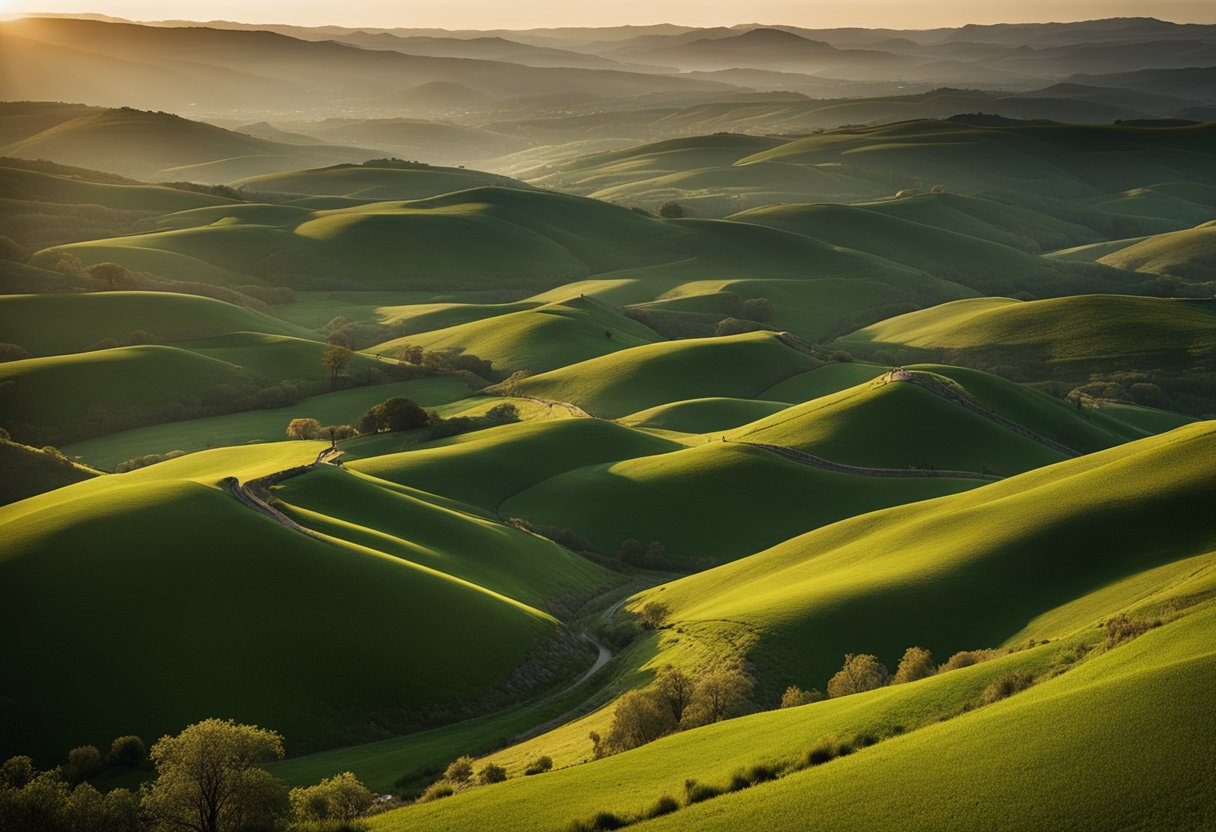
Updated On: April 15, 2024 by Marwa Alaa
Ireland’s landscape is a tapestry woven with the threads of countless stories, a rich weave of nature and mythology that has been spun over the millennia. Throughout this emerald isle, every mountain, river, and stone circle narrates the legends of Ireland and its ancient customs and beliefs. We find ourselves surrounded by a land that offers far more than its lush greenery and rugged coastlines—it is a portal to a past where the natural world and the spiritual realm were intimately connected.
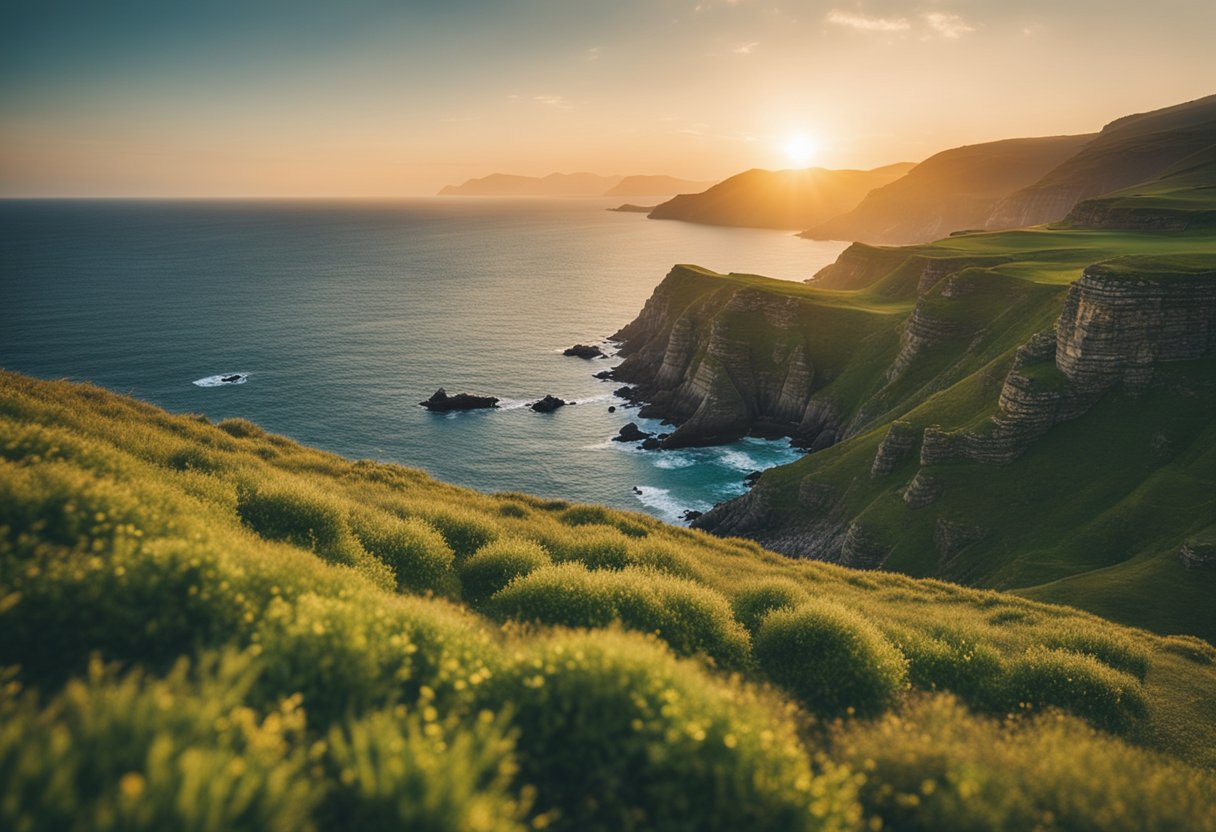
Our journey through Ireland’s scenic contours uncovers not just geological wonders but also the memories and wisdom of a culture steeped in a profound respect for nature. As we traverse this terrain, we encounter echoes of Ireland’s folklore etched into the natural formations and waterways that have shaped the island’s history. The landscape bears witness to the symbiotic relationship between the Irish people and their environment, a relationship that encapsulates both reverence and stewardship.
The Natural Tapestry and Legends of Ireland
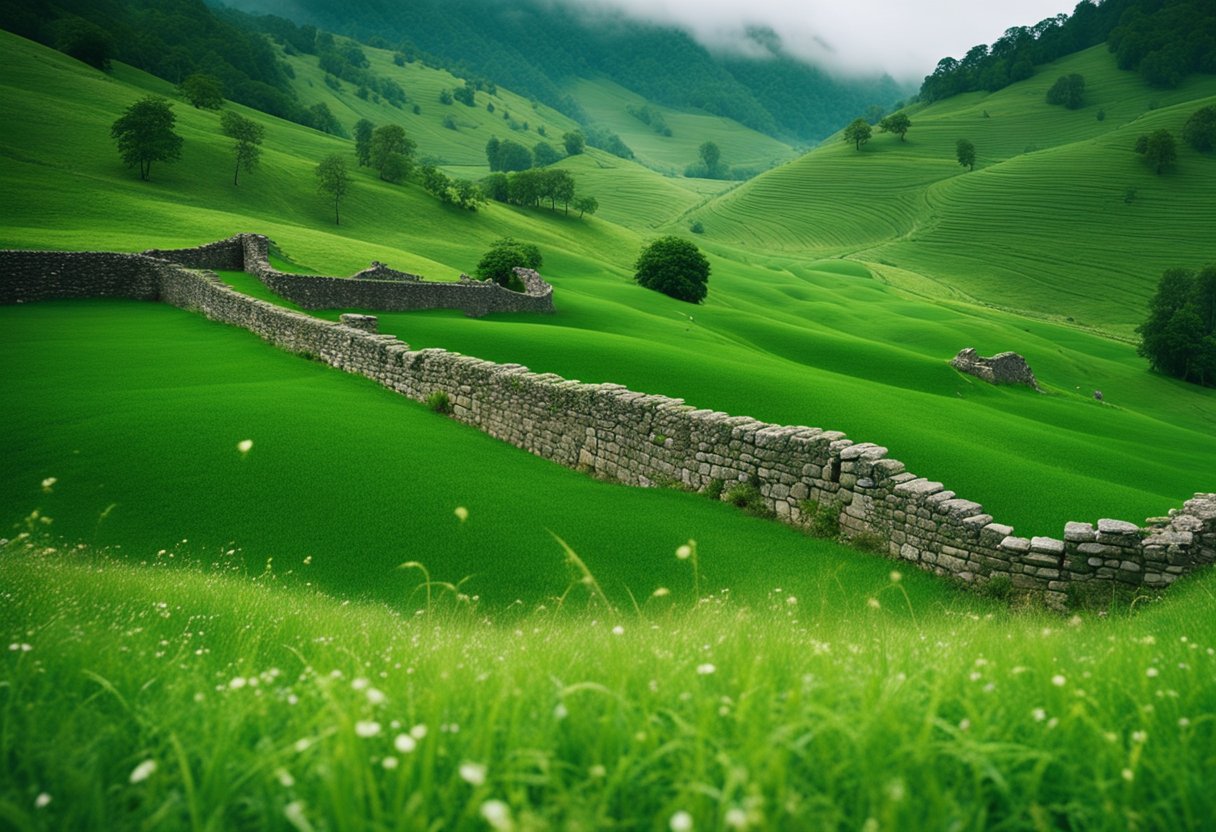
Ireland’s landscape is woven with rich biodiversity and distinctive ecosystems. It paints a picture of a land steeped in natural beauty, where flora and fauna thrive amid unique habitats, such as boglands, hedgerows, and the Burren’s limestone pavement.
Flora and Fauna
Ireland is home to a wide variety of plants and animals, each contributing to the nation’s ecological fabric. The emerald isle supports habitats teeming with life, from the red deer in Killarney National Park to the rare orchids adorning its woodlands. Biodiversity is a cornerstone, with each species playing a vital role in the health and vibrancy of our ecosystems.
Boglands and Hedgerows
Our boglands are vital carbon sinks and host to unique species of flora and fauna. These wetlands nurture plants like sphagnum moss and support animals such as the Irish hare. Hedgerows, another quintessential feature of the Irish countryside, crisscross the land, providing corridors for wildlife and a multitude of plants, from grass to flowering hawthorn.
The Burren Landscape
The Burren, a remarkable limestone plateau, is renowned for its exceptional geology and biodiversity. Here, Arctic, Alpine, and Mediterranean plants coexist while limestone-loving fauna scuttle across the rocky terrain. Preservation of this unique landscape is paramount, as it is not only a part of our natural inheritance but a living museum of how the interaction between the rocks and soil shapes the natural tapestry of our island.
Geological Formations

We’re exploring some of the most iconic geological formations within the Irish landscape, each telling a unique story of our natural heritage. From staggering cliffs to ancient volcanic legacies and the gentle slopes of age-old mountains, these sites are as informative as they are breathtaking.
Cliffs of Moher
Standing at the edge of the Cliffs of Moher, one is met with a dramatic view that captures the essence of Ireland’s natural wonders. These cliffs rise up to 214 metres (702 ft) above the Atlantic Ocean, a testament to the power of nature’s forces. Millennia of geological activity, erosion, and weathering shaped these stunning formations that now attract visitors from around the world.
Giant’s Causeway
A crown jewel in Northern Ireland’s landscape and a recognised World Heritage site, the Giant’s Causeway is a natural wonder composed of about 40,000 interlocking basalt columns. This remarkable formation is the result of an ancient volcanic fissure eruption. Legend and science intersect here to explain the distinctive hexagonal patterns — a remarkable story set in stone.
Slieve Bloom Mountains
Our journey through Ireland’s geological past brings us to the serene heights of the Slieve Bloom Mountains. Though modest in altitude, the Slieve Blooms are rich in history, formed during the last glacial period and sculpted by natural elements over time. Today, their gentle slopes tell a tale of a landscape once covered in ice, now a tranquil retreat teeming with flora and fauna.
Historical Perspectives
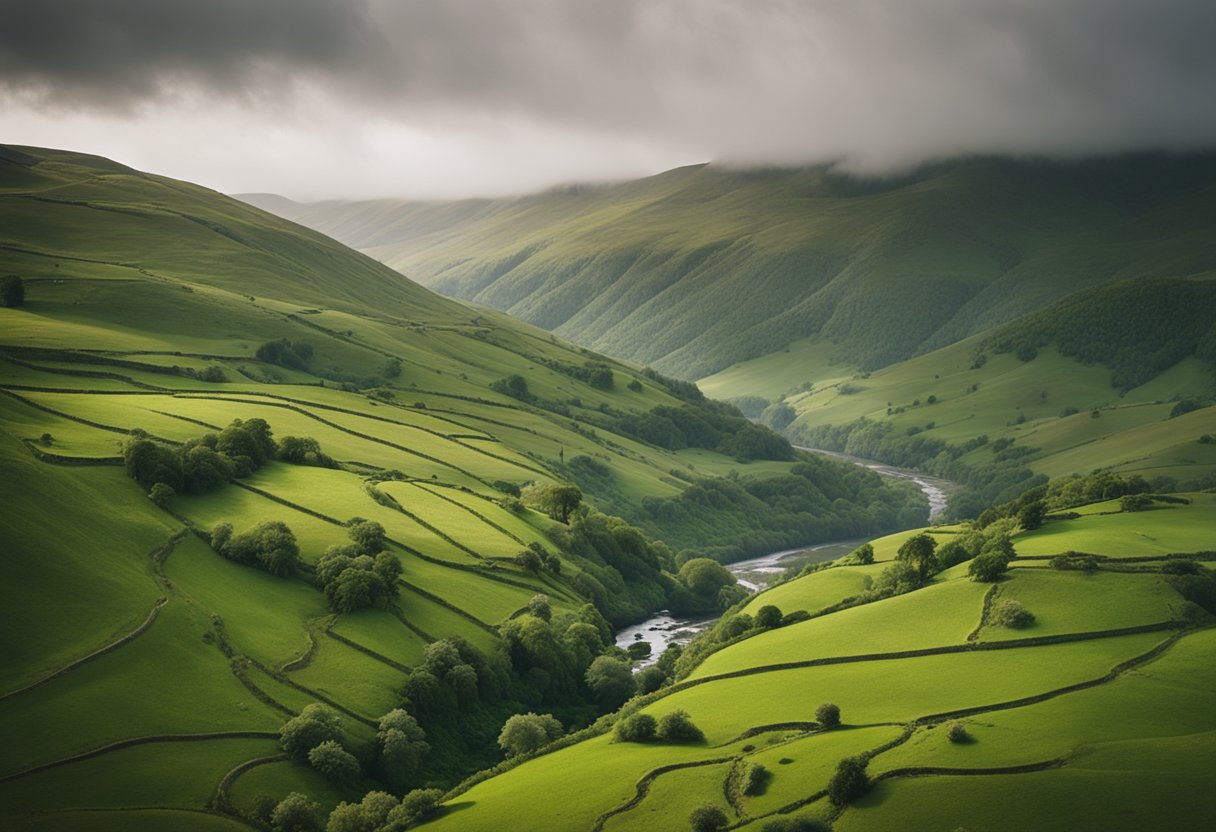
In unearthing Ireland’s vast history, we come across landscapes steeped in myth and legend, where every stone and mound is a testament to the passage of time. Archaeological findings merge with ancient tales to paint a vivid image of a land that has long been revered for its mystical connections.
Archaeological Sites
Ireland’s landscape is dotted with numerous archaeological sites that stand as silent narrators of our past. Sites such as Newgrange and Hill of Tara bear evidence of a civilisation that had a sophisticated understanding of astronomy and social structure. The bones and artefacts found at these sites provide a scientific chronology of human activity, while the islands, such as Skellig Michael, unveil hermitages that illustrate the commitment to the spiritual isolation of bygone eras.
Ancient Legends
As for the legends, these are as old as the hills themselves. Tales of the Otherworld are intricately woven into the fabric of Irish folklore, with entities such as the Tuatha Dé Danann and the Cailleach reflecting a belief system that predates Christian influence. These stories are not just remnants of a pagan past; they continue to shape the cultural identity and the landscape of our nation, with many sites named after the very legends they bore.
Our rich folklore puts forth a narrative so enthralling that every visit to these ancient landmarks feels like a step back in time, allowing us to walk with the ghosts of our collective forebears.
Ireland’s Waterways
Our exploration of Ireland’s rich tapestry weaves through its waterways, a cornerstone of natural beauty and historical narrative. Imposing rivers and serene loughs lace the emerald landscape, each with stories ripe for discovery.
River Shannon
The River Shannon emerges as Ireland’s most majestic river, not merely a waterway but a repository of Ireland’s lore, intertwining with history and myth. Our longest river is adorned with numerous islands that have witnessed monastic settlements and battles. It is also an angler’s haven, where fishing thrives as both a leisurely pastime and an economic resource. Species such as the Atlantic salmon navigate the Shannon, their migratory patterns enriching the river’s ecological tapestry.
Loughs and Coastal Waters
Our loughs and coastal waters paint a diverse marine landscape. They are natural habitats where fish proliferate, sustaining both ecological diversity and local fishing communities. These waters are not simply expanses to behold but living bodies that support and nourish, whether it be through the vital industry of fishing or the conservation of delicate marine life. The coastal waters, meanwhile, tell tales of ancient voyages and modern discovery, a testament to Ireland’s enduring bond with the sea.
Human Interactions with the Landscape
In Ireland’s varied landscape, our interactions are as diverse as the terrain itself, shaping everything from the verdant soil underfoot to the culture that defines us.
Agriculture and Farming
Agriculture has long been the backbone of rural Ireland. We cultivate the soil with care, reaping harvests that sustain both local markets and international ones. In places like Limerick, farmers have become synonymous with the land, nurturing it season after season. Their dedication ensures that turf, an essential resource, is cut from the bogs with respect for tradition yet mindful of the environment. It is this very turf that crackles warmly in turf fires across the nation.
Cultural Significance
The land tells its own stories, ones we have honoured for generations. Cultural significance is etched into the landscape, with each hill and stream whispering legends of yore. For us, it’s not just soil; it’s a canvas of our heritage. Traditional activities, including the cutting of turf, thread through our daily lives, binding us to our ancestors. Our collective narrative thrives through these interactions, ever-present in the songs we sing and the tales we share.
Tourism and Travel
The allure of Ireland’s landscapes reaches far beyond our shores, inviting travellers from around the world. Our role is to extend the warmth of Irish hospitality while guiding visitors through our living history and verdant fields. As we promote sustainable travel, we encourage travellers to experience the charm of our countryside responsibly. Visiting a turf farm offers a glimpse into a timeless practice, whilst meandering through a local market provides insight into our connection with the land. As hosts, we balance the thrum of tourism with the tranquillity that makes Ireland’s landscape a retreat for the soul.
Ecological Challenges
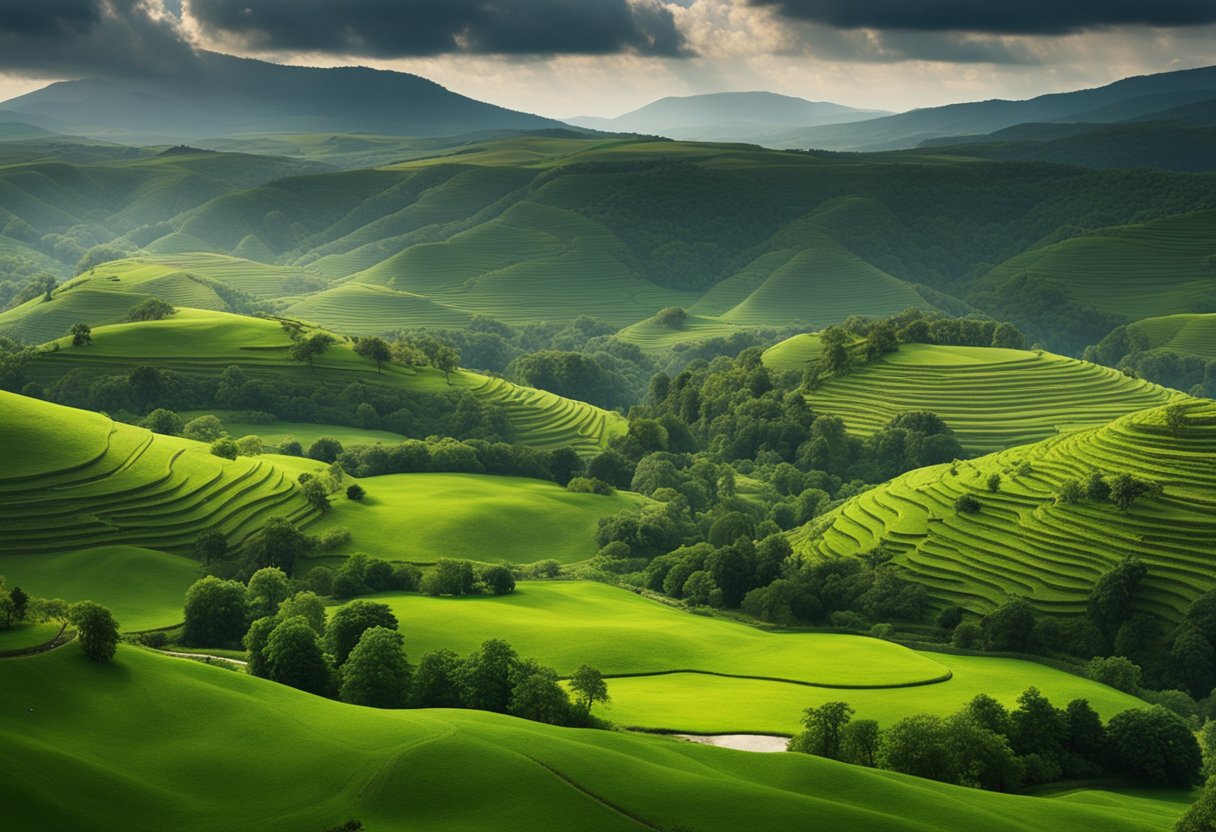
As we explore the intricate relationship between Irish myths and the natural world, we find that the ecological challenges facing Ireland’s landscape are both critical and complex. The lore of old, deeply interwoven with the land now serves as a poignant reminder of the fragile beauty at risk.
Habitat Loss
The degradation of natural habitats in Ireland is a pressing concern. Intensive agricultural practices, urbanisation, and peat extraction pose significant threats to our unique ecosystems. For instance, the raised bogs, once a prominent feature of the Irish landscape, have experienced considerable reduction due to peat extraction for fuel.
Extent of Habitat Loss:
- Agricultural Expansion: The conversion of land for farming has led to the disappearance of diverse habitats.
- Urbanisation: The growth of cities and towns has fragmented natural landscapes.
- Peat Extraction: Activities in peatland areas have led to the loss of these crucial ecosystems.
Species Extinction
The island faces the grim reality of species extinction, with several native flora and fauna in severe decline. Human exploitation and habitat destruction have paved the way for biodiversity loss, affecting species such as the corncrake and the freshwater pearl mussel. Conservation efforts are in place, aiming to protect what remains of our biodiversity and prevent further loss.
Critical Endangered Species:
- Birds: Species like the corncrake are under threat due to changes in land use.
- Marine Life: Overfishing and pollution endanger marine species and their habitats.
- Plants: Native plants are disappearing with the alteration of the landscape.
By pinpointing these issues, we begin to understand the intricate balance needed to safeguard Ireland’s ecological tapestry, ensuring the survival of a heritage that sustains both our culture and very existence.
Conservation Efforts
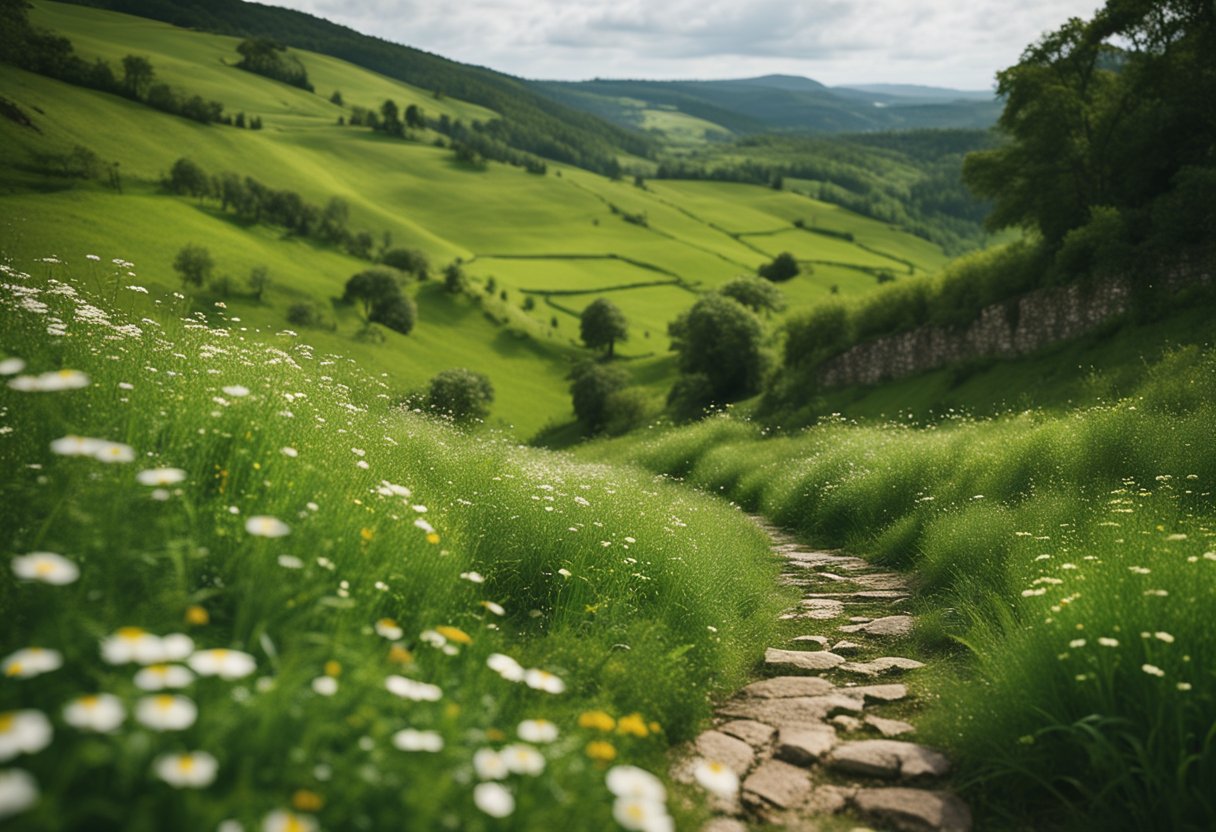
In our efforts to preserve the emerald tapestry of Ireland’s natural heritage, we have embraced a twofold approach focusing on sustainable management and the protection of our national parks.
Sustainable Management
We understand that effective conservation hinges on sustainable management practices. In County Clare, initiatives directing the use of land and natural resources have been pivotal. These include the careful management of habitats to ensure their resilience and continuity for future generations. The National Biodiversity Data Centre celebrates many positive outcomes birthed from these endeavours, yet we continue striving for further success stories.
National Parks
Our national parks, such as the wild stretches of Connemara, are bastions of biodiversity. Here, our work is instrumental in protecting the rich tapestry of flora and fauna. Through the establishment of parks and the enforcement of conservation legislation, we safeguard these pristine environments. These spaces not only serve as a sanctuary for wildlife but also as a haven for visitors to connect with nature. The preservation efforts in these parks underscore our commitment to conservation on a national scale.
The Climate’s Influence
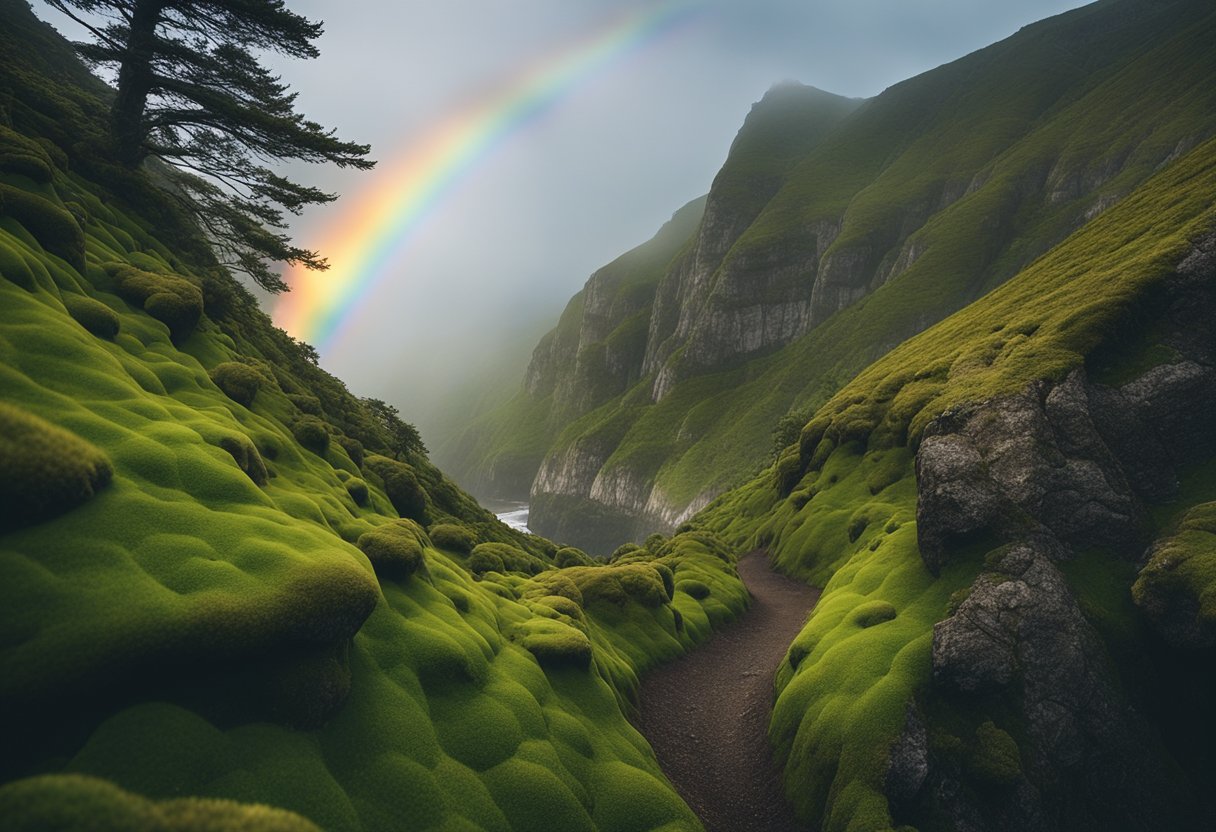
The climate of Ireland intricately weaves its story into the fabric of the land, strongly affecting both weather patterns and the physical landscapes.
Weather Patterns
Ireland’s weather is predominantly influenced by the Atlantic Ocean, resulting in mild winters and cooler summers. Frequent rainfall is a defining characteristic, nourishing the island’s lush vegetation and supporting the growth of extensive peat bogs. The prevailing wind patterns, predominantly from the southwest, are a direct consequence of this maritime climate.
Patterns of precipitation not only dictate the type of vegetation that thrives but also leave an indelible mark on the social activities and folklore of the region, instilling a respect for nature’s rhythms in local communities.
Impact on Landscapes
Our landscapes, etched and moulded by the climate, tell a story of centuries of weathering and natural sculpting. The rugged coastlines of the Wild Atlantic Way have been shaped by the relentless Atlantic, while the central plains’ history is palpable in the rich peatlands that cover it, once ancient forests transformed over millennia. The peat plays a critical role in our ecology, acting as a carbon sink and preserving a record of Ireland’s natural history.
These landscapes act as custodians of our past, encapsulating folklore and becoming central characters in Ireland’s cultural narrative. The bogs and moors, the cliffs and rolling green hills are all products of the climate’s artistry, as much as the palette of Ireland’s storied history.
Ireland’s Unique Biodiversity
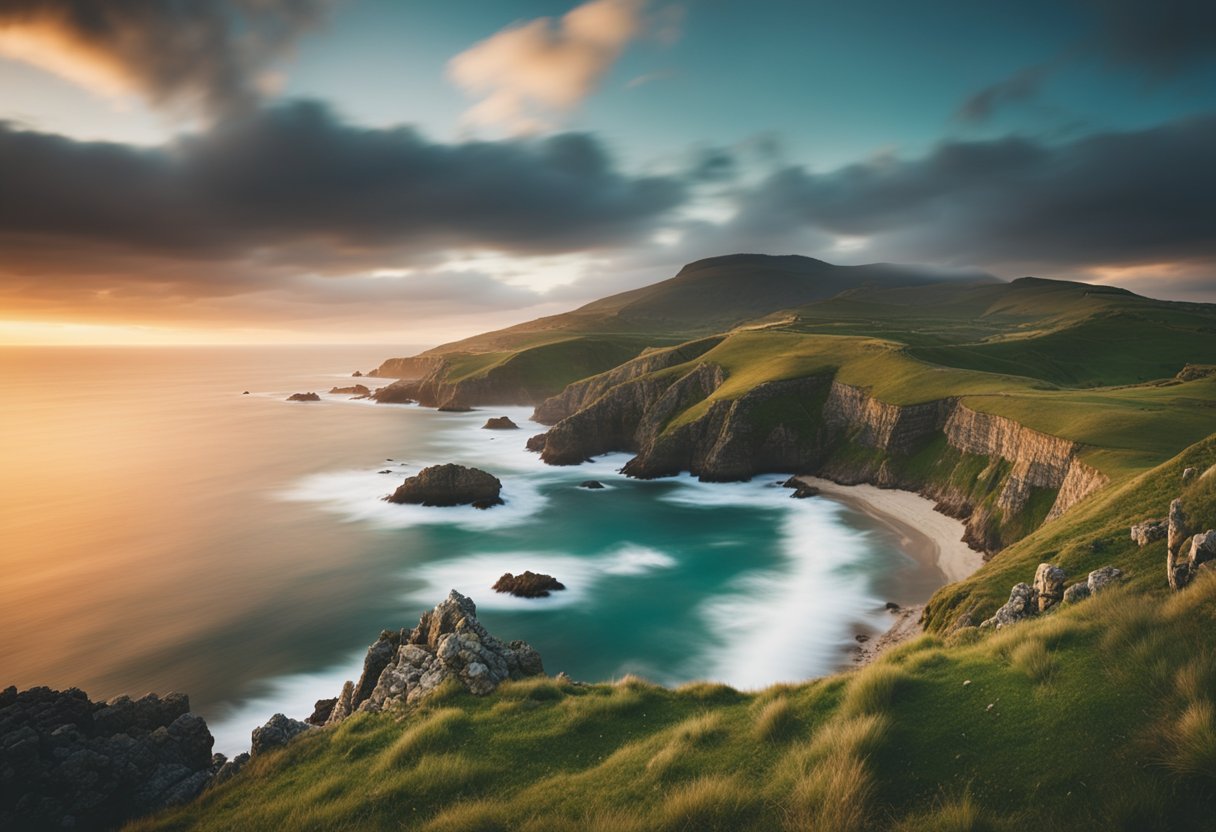
Ireland’s landscape is a tapestry of rich biodiversity, interwoven with unique flora and fauna that contribute to its natural heritage. Our commitment is to unveil the intrinsic bond between the Emerald Isle’s wildlife and its well-preserved ecosystems.
Native Plant Species
Hazel (Corylus avellana) and Elm (Ulmus) trees are quintessential to our woodlands. The rolling greenery is punctuated with grasses that sway in the Atlantic breezes, reinforcing the lushness synonymous with our terrain. These species, among others, form habitats that are not only visually resplendent but also crucial for the survival of various ecosystems.
- Hazel: A source of nourishment and shelter for many animals
- Elm: Once a dominant species, now in recovery from Dutch elm disease
Wildlife and Migration Patterns
Ireland is a sanctuary for fauna, including the delineative Irish hare (Lepus timidus hibernicus), a subspecies found only here. Migratory patterns add to this complexity, with bird species travelling vast distances to winter or breed in our verdant habitat. Animals, both resident and transient, rely on the consistency of these protected areas to thrive.
- Irish Hare: A symbol of our wild fauna, now carefully monitored for conservation
- Bird Migration: Vital for biodiversity; we witness species from afar gracing our skies
Our landscapes tell stories of diversity and resilience. Through protecting native plants and safeguarding wildlife corridors, we continue to nurture Ireland’s unique biodiversity. The interconnectedness of biodiversity to our natural heritage is a narrative we carry forward with pride and responsibility.
Cultural Expression and the Land

Ireland’s landscape is steeped in tales and artistic expressions, where every hill, glen, and rock tells a story. The land is a canvas, archiving centuries of cultural output from lore to the painted image.
Literary Inspirations
We’ve found that the verdant hills and rugged coastlines of Ireland have long served as a muse for poetry and prose. Countless authors have drawn upon the mystique of Irish folklore, weaving it into narrative tapestries that capture the essence of the land. An article on RTÉ details how trees in Irish folklore have historically reflected the intersection of nature and the spiritual, influencing tales that have been passed down through generations.
Visual Arts and Imagery
In terms of imagery, the landscapes are often interpreted through bold colours and striking contrasts. Irish mythology and legend find new life in vibrant images, with the ‘Good People’ or fairies featuring prominently in visual storytelling. Connolly Cove, an online trove of world stories and culture, provides informative pieces on how these legends are visually represented, encapsulating the ethereal quality of Irish myth.
Frequently Asked Questions
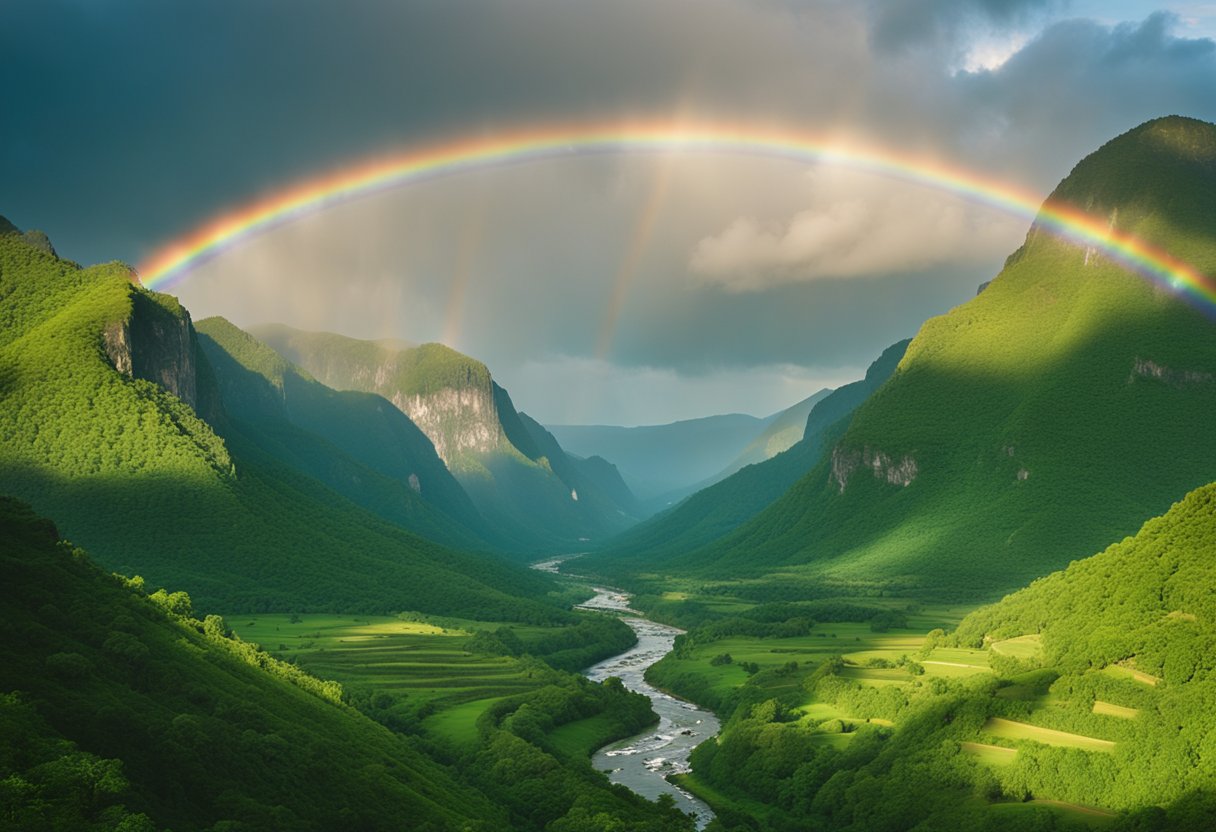
In this section, we explore the intricate tapestry of Ireland‘s mythical past, shedding light on the folk stories and legends that are intricately woven into the landscape of this enchanting country.
What are the most captivating folk stories from Ireland?
Ireland’s folk stories are a mesmerising blend of magic, heroism, and romance. For generations, they’ve breathed life into the lush Irish landscape, with tales like “The Children of Lir” and “Oisín in Tír na nÓg” captivating hearts with their blend of tragedy and wonder. The richness of Irish folklore is preserved in these enduring stories of transformation and adventure.
Which Irish myth is considered the most renowned?
The myth of Cú Chulainn, the legendary warrior of the Ulster Cycle, stands as the most illustrious in Irish legend. His feats and strength, particularly in the epic ‘Táin Bó Cúailnge’, have cemented his status as an iconic figure whose valour is celebrated in Irish culture and lore.
How far back can the earliest Irish folklore be traced?
Irish folklore stretches back to the pre-Christian era, with some of the earliest stories being part of an oral tradition that predates written record. This profound legacy reaches into the misty expanse of Ireland’s ancient Celtic past, where myths and legends were passed down through generations by the seanchaí, the traditional Irish storytellers.
Could you detail the folklore surrounding the fairy folk in Ireland?
The fairy folk, or ‘Aos Sí‘, play a significant role in Irish folklore and are respected in many rural parts of Ireland even today. It is said that they live in the ‘Otherworld’ and frequently interact with humans, sometimes bringing fortune but often causing mischief or harm to those who disrespect their abodes, such as the fairy forts and ring forts that dot the Irish countryside.
What are the common themes found in Irish mythological tales?
Common themes in Irish mythology include the struggle between good and evil, the cyclical nature of life and death, and the pursuit of love and heroism. Tales often depict the powerful bond between humans and the natural world, as well as the human quest for knowledge and immortality, underscoring the spiritual depth of these ancient narratives.
How have Irish landscape features influenced local legends and myths?
The dramatic Irish landscape, with its windswept hills, rugged coastlines, and mysterious lakes, has deeply influenced local legends and myths. Features such as the Giant’s Causeway have their own mythological explanations, with stories of giants like Fionn mac Cumhaill (Finn McCool) embedding themselves into the very stones of the nation, thus marrying the landscape with the rich fabric of mythological history.






